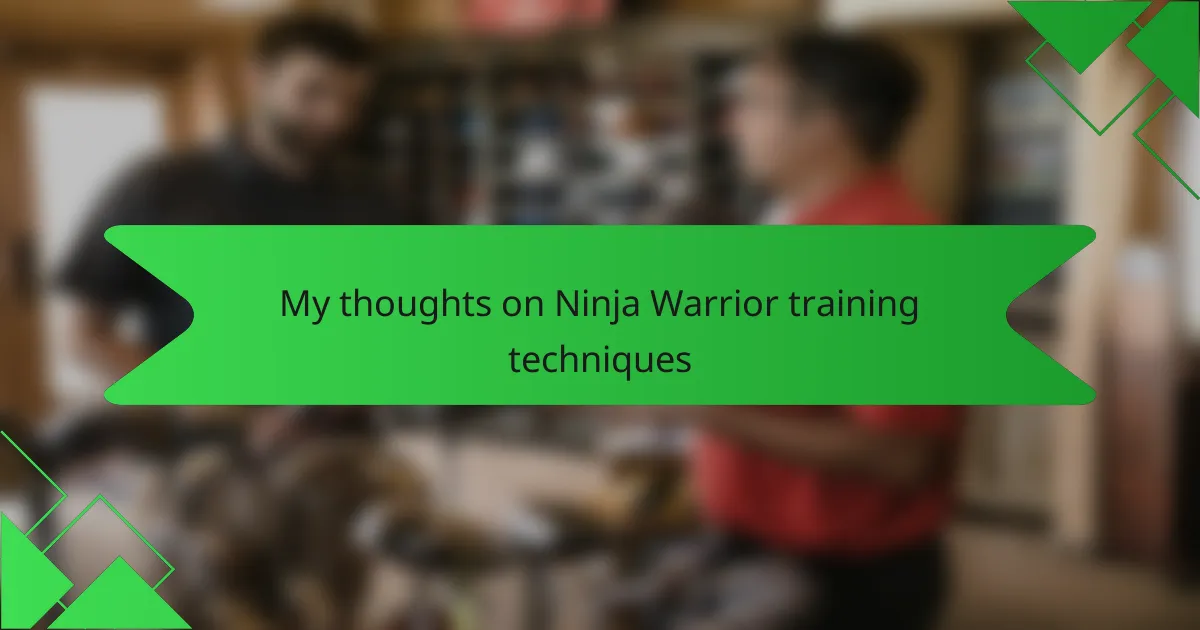Key takeaways
- Obstacle course racing (OCR) combines speed, strength, agility, and mental toughness, creating a unique adventure experience.
- Ninja Warrior training emphasizes grip strength, explosive power, endurance, and agility, essential for overcoming challenging obstacles.
- Effective training routines should include a mix of grip exercises, plyometric drills, and balance work to enhance overall performance.
- Common challenges in Ninja Warrior training include grip fatigue, balance difficulties, and maintaining mental endurance during obstacles.

Introduction to obstacle course racing
Obstacle course racing is unlike any other sport I’ve tried—it demands not just speed, but strength, agility, and a mental edge. Have you ever wondered what it feels like to climb, crawl, and leap through a series of challenges designed to push your limits? That mix of adrenaline and focus is what hooks me every time I step onto the course.
From my experience, OCR events blend the thrill of running with the unpredictability of obstacles, making no two races the same. It’s this variety that keeps me coming back, always curious about the next hurdle or wall that I’ll face. Do you see how it’s more than just a race—it’s an adventure?
What struck me most when I first tried obstacle course racing was the community. Everyone is pushing themselves, cheering each other on, and celebrating those hard-earned victories together. This shared grit and determination explain why OCR has grown into such a passionate global movement.
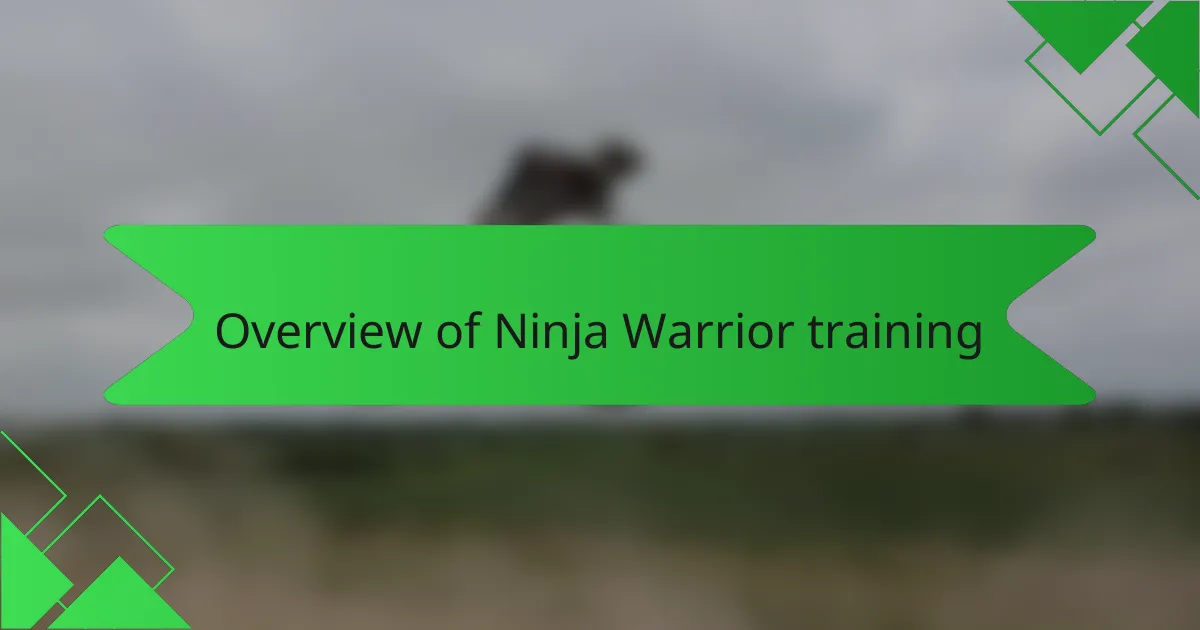
Overview of Ninja Warrior training
Ninja Warrior training is all about mastering agility, strength, and mental toughness. From my experience, it’s a demanding journey that pushes you beyond typical workout routines. What fascinates me most is how it combines explosive power with balance and precision, requiring focused practice on obstacles I previously thought impossible.
| Training Aspect | Key Focus |
|---|---|
| Agility | Quick directional changes, balance, and coordination drills |
| Strength | Grip strength, upper body, and core conditioning |
| Mental Toughness | Overcoming fear, focus, and persistence on challenging obstacles |
| Endurance | Maintaining energy throughout multiple obstacles without losing form |
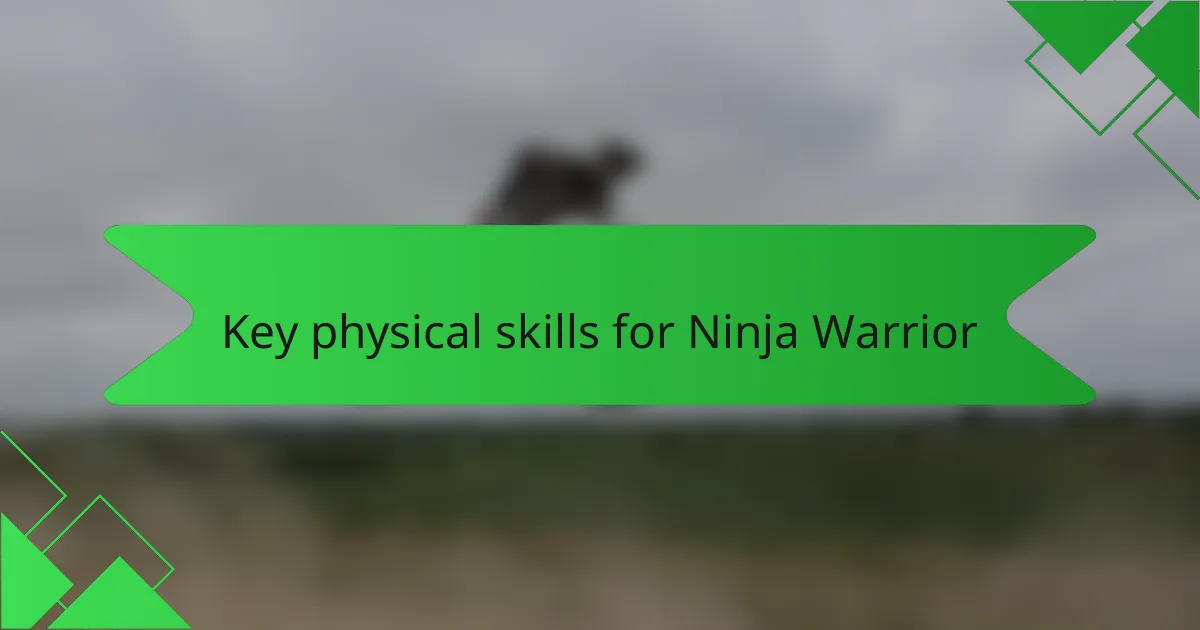
Key physical skills for Ninja Warrior
Mastering Ninja Warrior requires a unique blend of explosive power, grip strength, and agility. From my experience, the ability to maintain a strong, controlled grip often makes the difference between success and failure on the most challenging obstacles. I vividly remember struggling with the Warped Wall until I dedicated specific training to upper body endurance, which completely transformed my performance.
Here are the key physical skills I believe are essential for anyone serious about Ninja Warrior training:
- Grip Strength: Vital for hanging, swinging, and climbing obstacles. Training with hang boards and fat grips helped me immensely.
- Explosive Power: Necessary for dynamic movements like jumping and vaulting. Plyometric exercises played a crucial role here.
- Core Stability: Keeps your body balanced and controlled. Planks and hanging leg raises worked wonders.
- Upper Body Endurance: Enables sustained effort on long, demanding obstacle sequences. Pull-up variations were my go-to.
- Agility and Coordination: Helps smoothly transition between obstacles. Drills with cones and balance beams sharpened these skills.
These skills form the foundation for tackling Ninja Warrior courses, and integrating them into your routine can boost both confidence and performance.
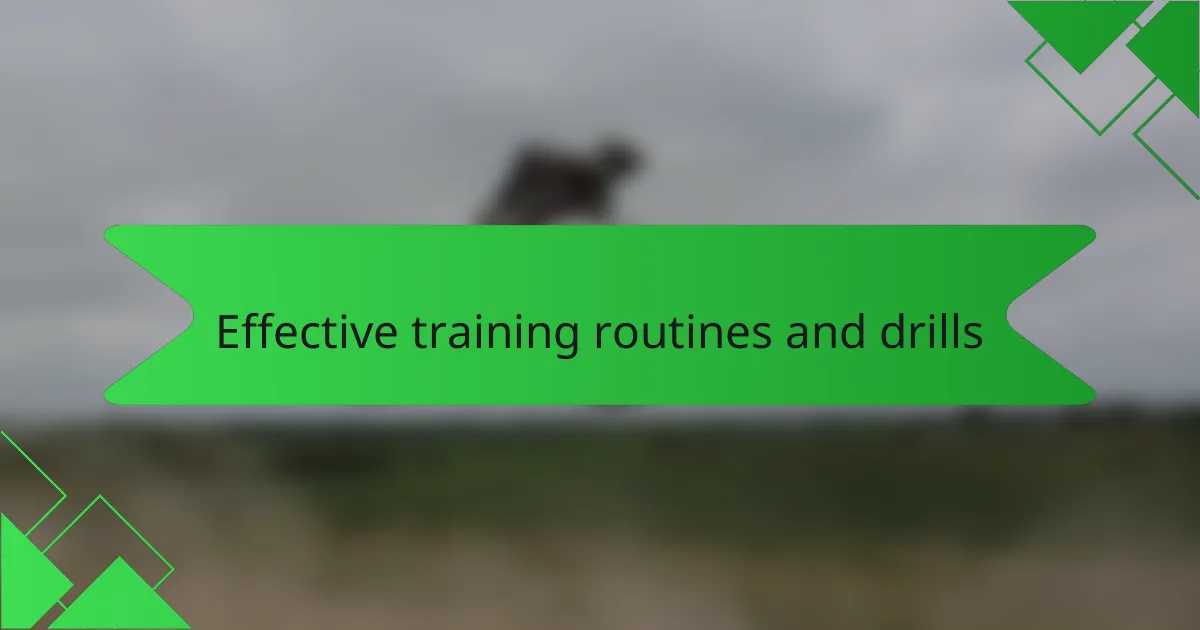
Effective training routines and drills
When I first started training for Ninja Warrior competitions, I quickly realized that consistency in effective routines made all the difference. The drills that focus on grip strength, explosive power, and balance not only build the necessary skills but also boost confidence during those challenging obstacles. One particular routine that stuck with me involved a mix of hanging leg raises and step-up box jumps, which improved my core strength and explosive leg power significantly.
In my experience, incorporating variety into your routines keeps the training exciting and prevents burnout. Here’s a list of drills I found most effective for preparing both body and mind:
- Weighted pull-ups to enhance upper body strength
- Timed obstacle runs to simulate race conditions
- Balance board exercises to improve stability
- Rope climbs to develop grip and arm endurance
- Plyometric drills like box jumps for explosive power
- Core circuits including planks and hanging leg raises
- Forearm and finger grip trainers for better hold
- Mobility work to reduce injury risk and improve fluid movement
These drills, combined thoughtfully, created a training rhythm that kept me mentally and physically prepared for the unpredictable nature of obstacle courses. Have you tried mixing these into your sessions yet? It’s amazing how small adjustments can lead to big improvements.
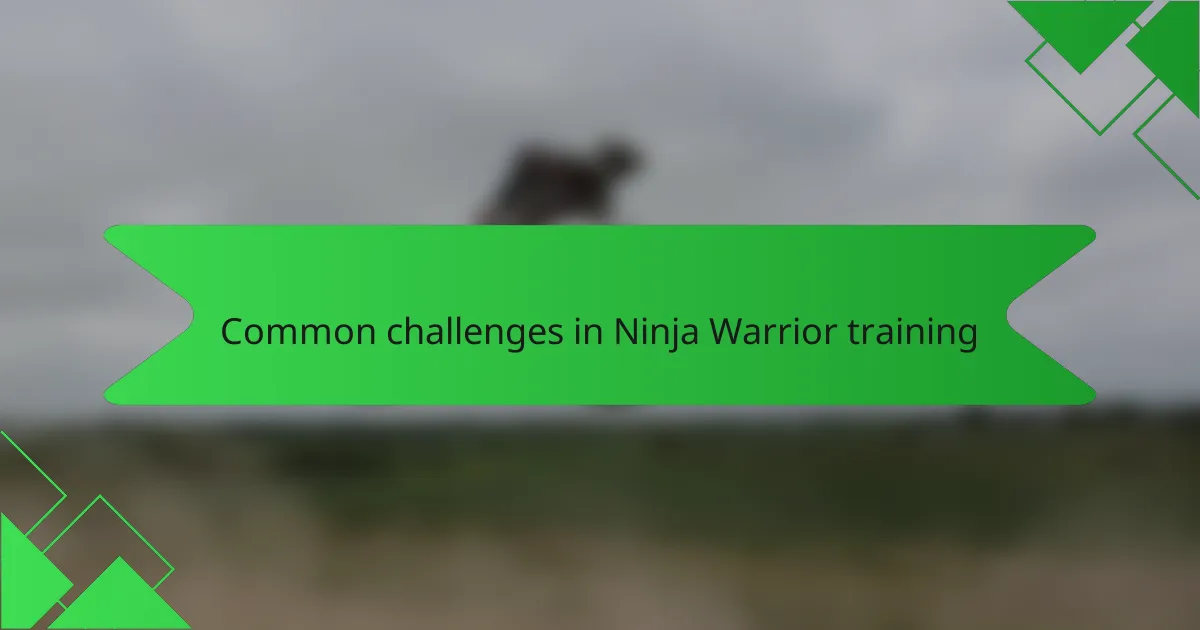
Common challenges in Ninja Warrior training
Common challenges in Ninja Warrior training often revolve around grip strength, balance, and mental endurance. From my experience, the grip fatigue hits hardest during long sessions, making even simple holds feel impossible. Balancing on narrow edges is another beast—your confidence wavers, and that wobble can lead to costly slips.
| Challenge | Impact |
|---|---|
| Grip Strength | Limits hold time; causes early fatigue. |
| Balance | Crucial for precise movements; affects stability on obstacles. |
| Mental Endurance | Maintains focus and overcomes fear during tricky sequences. |
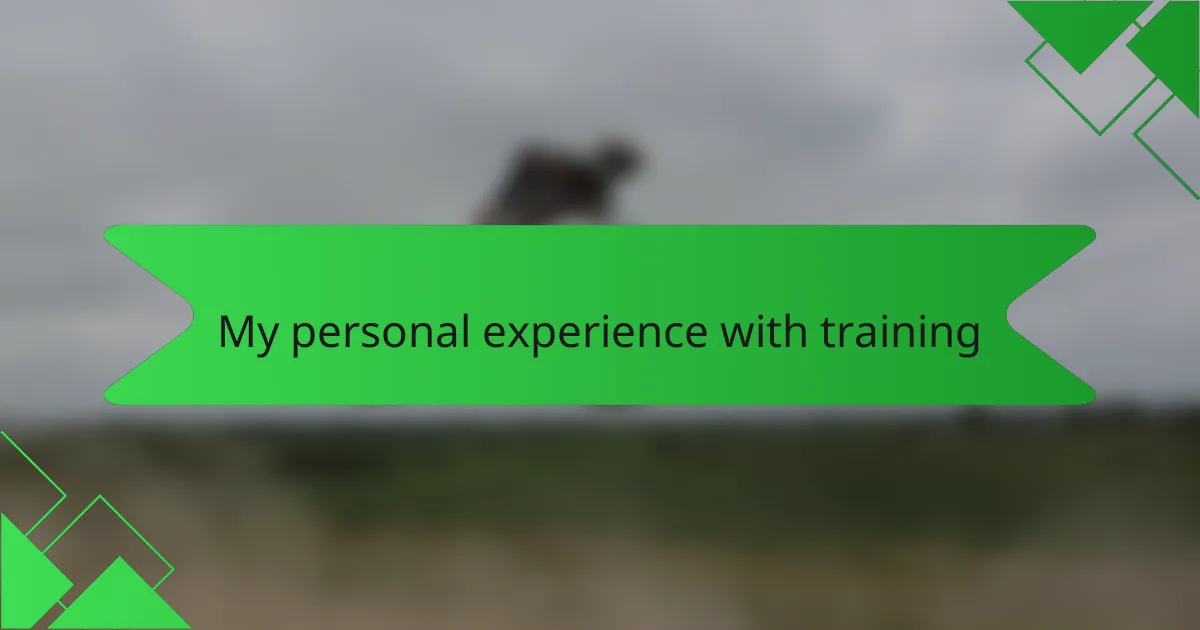
My personal experience with training
Training for Ninja Warrior demands both physical grit and mental focus. When I first started, I underestimated how much grip strength alone would challenge me. I vividly recall struggling to hold onto the warped wall during my initial sessions, feeling a mix of frustration and determination that fueled me to push harder.
Over time, I developed specific routines that sharpened my skills and confidence. Here’s what worked best for me:
– Prioritizing grip and forearm exercises like dead hangs and weighted holds
– Incorporating balance drills, such as slacklining and beam walking
– Practicing explosive movements with plyometrics to improve agility
– Repeatedly simulating obstacles to build muscle memory and reduce fear
– Focusing on core strength through planks and rotational exercises to stay stable
Each step of this regimen taught me patience and resilience, essential traits for anyone tackling Ninja Warrior courses.
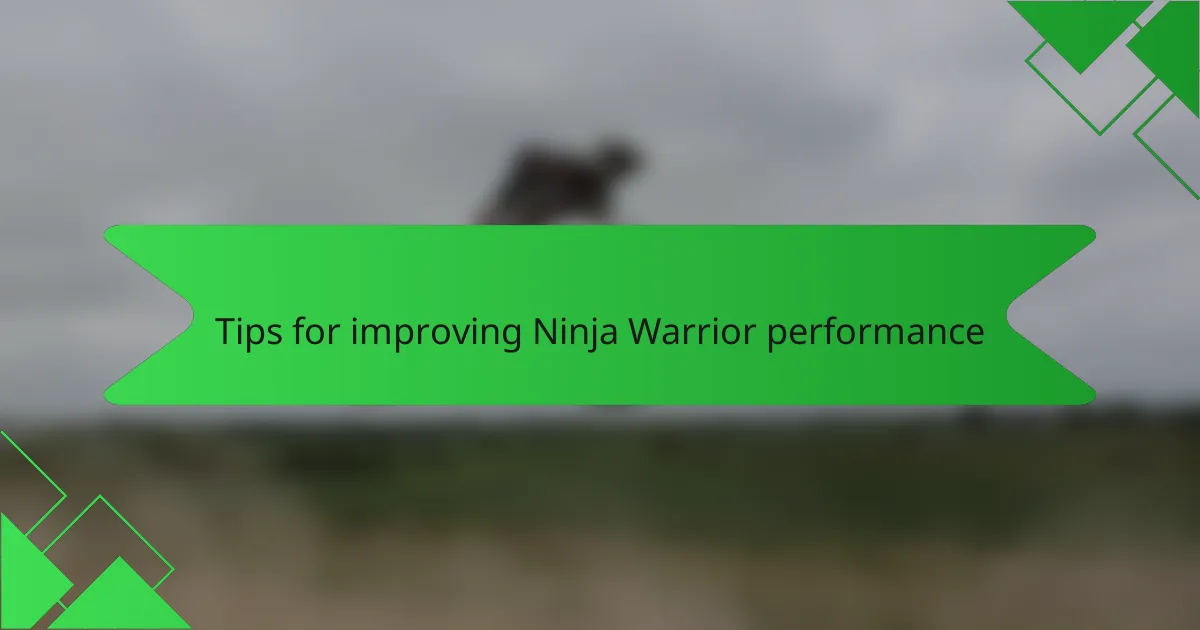
Tips for improving Ninja Warrior performance
To boost your Ninja Warrior performance, I’ve found that focusing on grip strength is crucial. Early in my training, I underestimated how much my hands and forearms would fatigue, and strengthening these areas made a noticeable difference. Challenging grips like the salmon ladder or ring swings demand not just power, but endurance too.
Besides grip, incorporating dynamic balance exercises changed how I approached tricky obstacles. Practicing movements on unstable surfaces, like a wobble board, helped me maintain composure under pressure. Here are key tips to help you elevate your performance:
- Train grip strength daily using hang boards, farmer’s carries, or towel pull-ups
- Include bodyweight exercises like pull-ups and finger hangs for forearm endurance
- Work on dynamic balance through wobble boards, slacklines, or single-leg drills
- Focus on explosive power with plyometric training such as box jumps and clapping pull-ups
- Prioritize recovery with proper stretching and rest to avoid burnout and injury
